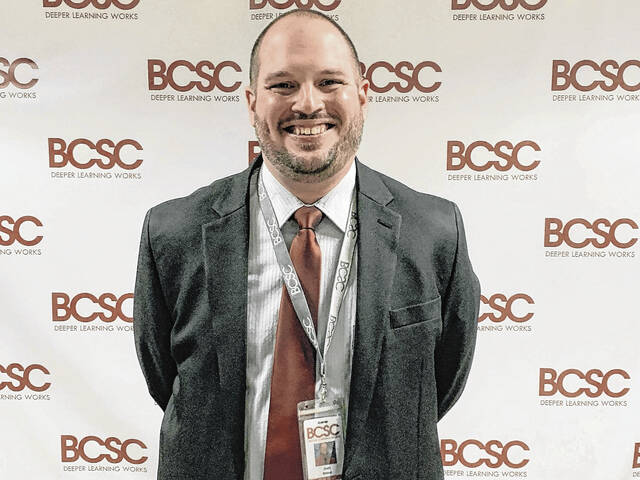Bartholomew Consolidated School Corp.’s K-12 virtual pathway expects a slight decrease in full-time students for the spring semester and a significant uptick in part-time participants.
Columbus Virtual Pathway Director Josh Giebel said BCSC expects about 400 full-time students in virtual learning for the spring semester. In comparison, just more than 450 students have been enrolled full-time during the first semester. In addition, about another 120 students took some of their classes through the virtual pathway for credit recovery purposes or because of scheduling difficulties.
Full-time students are expected to enroll for a minimum of one semester, Giebel said.
“We don’t want a student to miss out on some learning,” he explained, “and we know that that transition time is really challenging for students, for teachers, for parents. And so the semester-long commitment allows us to make sure they’re getting all the content they need, and we’re not disrupting their learning environment for them or for other students.”
The deadline for students to commit to virtual or in-person for the second semester came in mid-November. Giebel said that, as of Nov. 23, about 75 K-5 students had committed for the spring semester, which is down somewhat from the fall. He believes that vaccine eligibility for younger students may be a factor in the change.
For sixth through 12th graders, CVP expects about 330 students for a total of about 400 full-time.
”I anticipate that credit recovery number to go up from 120 probably by another 50 students or so, so probably closer to 170 to 200 students who are looking for credit recovery or credit accrual,” Giebel added.
So while the number of K-5 full-time students will likely decrease, he expects the overall number of full time and part time students to rise.
Giebel said he’s pleased with how the fall semester went. He believes that the flexibility virtual learning provides is “empowering” for students. In some cases, kids might be finishing up their first semester courses early and are able to move forward.
However, other students may be less committed.
“One of the challenges that is a reality of the virtual learning environment is that when a student is choosing not to engage — and by that I mean logging in and regularly working on their coursework — it’s a little bit harder (than in person),” he said. “…We don’t have the ability, necessarily, to know that a student’s not engaged right away and just kind of walk over to their house and say, ‘Hey you need to redirect that.’”
The staff have been working to engage these students and have also begun to learn the signs that a student might be behind or in need of more structure. A handful of students stop in the building regularly to work and get help, then go home. CVP has also held parent-teacher conferences and created “attendance contracts” or schedules when necessary.
Giebel added that staff are also focused on building good relationships with students, which can be difficult in a virtual program.
“We’re not seeing them in the halls every day, where we can just kind of give a smile and a wave and ask how their day is going,” he said. “So we’re working to create those different opportunities for students to connect with their teachers, with their peers, to have some of that social aspect that we know is really important.”





